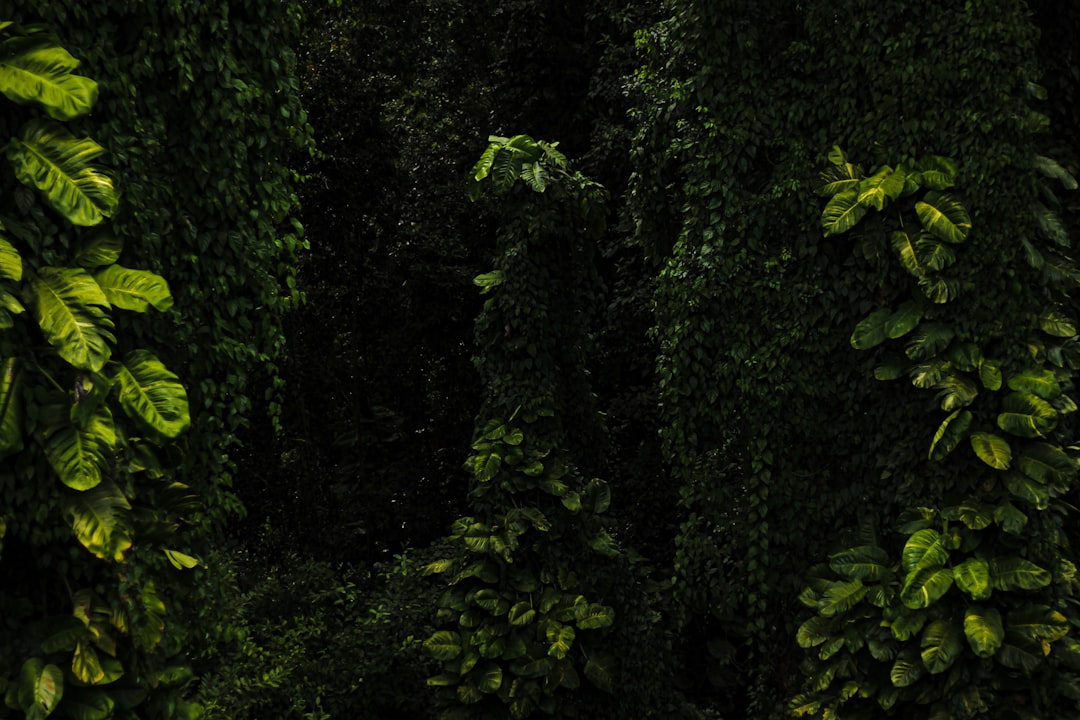The ocean albatross, a magnificent seabird known for its impressive wingspan and remarkable flying abilities, has captivated the hearts of many nature enthusiasts and researchers alike. These birds, belonging to the family Diomedeidae, are often seen gliding effortlessly over the vast expanses of the ocean, embodying a sense of freedom that few other creatures can match. With their ability to travel thousands of miles across the open sea, albatrosses are not only a symbol of the wild and untamed nature of the ocean but also play a crucial role in marine ecosystems.
Their presence in the waters of the Southern Hemisphere, particularly in the Drake Passage, highlights the intricate connections between wildlife and their habitats. The ocean albatross is not merely a bird; it is a testament to the wonders of evolution and adaptation. With their long wings and specialized flight techniques, these birds can soar for hours without flapping their wings, utilizing wind currents to navigate vast distances.
This remarkable ability allows them to traverse the often-turbulent waters of the Southern Ocean, where they find food and breeding grounds. As they glide above the waves, they serve as a reminder of the beauty and complexity of life in the marine environment.
Key Takeaways
- The Ocean Albatross is a majestic seabird known for its impressive wingspan and graceful flight over the open ocean.
- The Drake Passage serves as a crucial habitat for the Ocean Albatross, providing abundant food sources and ideal nesting grounds.
- With a wingspan of up to 11 feet, the Ocean Albatross is well-adapted for long-distance flight and can travel thousands of miles in search of food.
- Albatross are known for their monogamous mating behavior and impressive migratory patterns, traveling between their nesting grounds and foraging areas.
- Conservation efforts are essential for protecting the Ocean Albatross and preserving its vital role in the ecosystem of the Drake Passage.
The Drake Passage: A Vital Habitat for Albatross
The Drake Passage, situated between the southern tip of South America and Antarctica, is a critical habitat for various species of albatross. This body of water is notorious for its rough seas and unpredictable weather, yet it provides an essential feeding ground for these magnificent birds. The nutrient-rich waters of the Drake Passage are teeming with marine life, including krill and fish, which are vital food sources for albatrosses.
The convergence of ocean currents in this region creates an abundance of nutrients that support a diverse array of marine organisms, making it an ideal location for albatrosses to thrive. In addition to being a feeding ground, the Drake Passage also serves as a migratory corridor for albatrosses traveling between their breeding colonies and feeding areas. The passage’s unique geography and oceanographic conditions create a dynamic environment that supports not only albatrosses but also numerous other seabird species.
As these birds navigate through the passage, they rely on their keen sense of direction and understanding of wind patterns to find their way. The Drake Passage is not just a physical space; it is a lifeline for albatrosses, providing them with the resources they need to survive and reproduce.
Physical Characteristics of the Ocean Albatross

Ocean albatrosses are renowned for their impressive physical characteristics, which contribute to their exceptional flying abilities. One of the most striking features of these birds is their wingspan, which can reach up to 12 feet in some species. This expansive wingspan allows them to glide effortlessly over long distances while expending minimal energy.
Their long, narrow wings are perfectly adapted for dynamic soaring, enabling them to take advantage of wind currents and thermals as they traverse the open ocean.
Their streamlined bodies reduce drag while flying, allowing them to maintain speed and efficiency during long flights.
The coloration of albatrosses varies among species, with many exhibiting a combination of white and dark plumage that provides camouflage against the ocean’s surface. Their large beaks are designed for catching prey, equipped with specialized hooks that help them grasp slippery fish and squid. These physical adaptations not only enhance their hunting capabilities but also play a crucial role in their overall survival in the challenging marine environment.
The Behavior and Migratory Patterns of Albatross
| Albatross Species | Migratory Range | Migration Pattern | Distance Traveled |
|---|---|---|---|
| Wandering Albatross | Antarctic and sub-Antarctic waters | Regular clockwise circumnavigation of the Southern Ocean | More than 120,000 km per year |
| Black-browed Albatross | Sub-Antarctic and temperate waters | Foraging trips to South America and South Africa | Up to 190,000 km per year |
| Short-tailed Albatross | North Pacific Ocean | Long-distance migrations between breeding and feeding grounds | Up to 64,000 km per year |
The behavior of ocean albatrosses is as fascinating as their physical attributes. These birds are known for their strong pair bonds, often forming lifelong partnerships with a single mate. Courtship rituals involve elaborate displays of synchronized flying and vocalizations, which strengthen their bond and ensure successful breeding.
Once paired, albatrosses engage in cooperative parenting, taking turns incubating eggs and feeding their chicks. This commitment to family life is a testament to their social nature and highlights the importance of stable relationships in their reproductive success. Migratory patterns among albatross species are equally intriguing.
Many albatrosses undertake extensive migrations that can span thousands of miles across the Southern Ocean. They typically follow established routes that coincide with food availability and breeding seasons. Some species may travel from breeding colonies on remote islands to feeding grounds in nutrient-rich waters, returning only when it is time to breed again.
This migratory behavior is not only essential for their survival but also reflects their adaptability to changing environmental conditions.
Conservation Efforts for the Ocean Albatross
As majestic as they are, ocean albatrosses face numerous threats that jeopardize their populations. Overfishing, climate change, and habitat destruction have all contributed to declining numbers among various species. In response to these challenges, conservation efforts have been initiated globally to protect these remarkable birds and their habitats.
Organizations dedicated to seabird conservation work tirelessly to raise awareness about the plight of albatrosses and implement strategies aimed at safeguarding their future. One significant conservation initiative involves establishing marine protected areas (MPAs) within critical feeding grounds like the Drake Passage. By restricting fishing activities in these regions, conservationists aim to reduce competition for food resources and minimize bycatch incidents where albatrosses inadvertently become entangled in fishing gear.
Additionally, public education campaigns seek to inform fishermen about best practices that can help mitigate negative impacts on albatross populations. Through collaborative efforts between governments, NGOs, and local communities, there is hope for reversing the decline of ocean albatrosses and ensuring their survival for generations to come.
The Role of Albatross in the Ecosystem of the Drake Passage

Albatrosses play a vital role in maintaining the health of marine ecosystems within the Drake Passage. As apex predators, they help regulate fish populations by preying on various species, including squid and small fish. This predatory behavior contributes to a balanced food web, ensuring that no single species dominates the ecosystem.
By controlling prey populations, albatrosses indirectly support other marine life forms that rely on these resources. Moreover, albatrosses contribute to nutrient cycling within the ecosystem through their feeding habits. When they consume prey from the ocean depths and later excrete waste on land or at sea, they release essential nutrients back into the environment.
This process supports primary productivity by enriching waters with nutrients that promote phytoplankton growth—the foundation of marine food chains. Thus, albatrosses are not merely inhabitants of the Drake Passage; they are integral components of its ecological framework.
The Albatross as a Symbol of Freedom and Majesty
Throughout history, the ocean albatross has been revered as a symbol of freedom and majesty in various cultures around the world. Their ability to soar across vast distances without flapping their wings evokes a sense of liberation that resonates deeply with human experiences. In literature and folklore, albatrosses have often been depicted as mystical creatures embodying both grace and strength.
Their presence inspires awe and admiration among those fortunate enough to witness them in flight. The symbolism associated with albatrosses extends beyond mere aesthetics; it reflects humanity’s connection to nature and the wild spirit that resides within us all. As these birds glide effortlessly over turbulent seas, they remind observers of the beauty found in unrestrained movement and exploration.
In many ways, albatrosses serve as ambassadors for the ocean’s wonders, encouraging people to appreciate and protect these magnificent creatures and their habitats.
The Relationship Between Albatross and Human Activity in the Drake Passage
The relationship between albatrosses and human activity in the Drake Passage is complex and multifaceted. While humans have long admired these birds for their beauty and grace, they have also posed significant threats to their survival through various activities such as commercial fishing and shipping. Overfishing has led to declines in prey availability for albatrosses, while accidental bycatch during fishing operations has resulted in tragic losses for these birds.
However, there is also potential for positive interactions between humans and albatrosses. Ecotourism initiatives focused on responsible wildlife observation can foster appreciation for these birds while generating revenue for local communities engaged in conservation efforts. By promoting sustainable practices that prioritize both economic development and environmental stewardship, it is possible to create a harmonious coexistence between humans and albatrosses in the Drake Passage.
The Importance of Studying and Protecting the Ocean Albatross
Studying ocean albatrosses is crucial not only for understanding their biology and behavior but also for gaining insights into broader ecological dynamics within marine environments. As indicators of ocean health, changes in albatross populations can signal shifts in marine ecosystems caused by climate change or human activities. By monitoring these birds’ movements and breeding success rates, researchers can gather valuable data that informs conservation strategies aimed at protecting both albatrosses and their habitats.
Protecting ocean albatrosses is essential for preserving biodiversity within marine ecosystems. As apex predators, they play a critical role in maintaining balance within food webs while contributing to nutrient cycling processes that support other marine life forms. Ensuring their survival ultimately benefits entire ecosystems—highlighting how interconnected all species are within our planet’s delicate web of life.
Tips for Observing Albatross in the Drake Passage
For those eager to witness the majesty of ocean albatrosses firsthand, observing them in their natural habitat can be an unforgettable experience. One effective way to do this is by embarking on guided tours or cruises specifically designed for wildlife observation in the Drake Passage. These excursions often provide knowledgeable guides who can share insights about albatross behavior while ensuring responsible viewing practices that minimize disturbance.
When observing albatrosses from a boat or ship, it is essential to remain quiet and respectful so as not to disrupt their natural activities. Binoculars or cameras with zoom lenses can enhance viewing experiences by allowing observers to appreciate intricate details from a distance without encroaching on these magnificent birds’ space. Additionally, being mindful of weather conditions can significantly impact sightings; calm days with clear skies often yield better opportunities for spotting these graceful flyers gliding above the waves.
Embracing the Beauty and Wonder of the Ocean Albatross
In conclusion, the ocean albatross stands as a remarkable testament to nature’s beauty and resilience within one of Earth’s most challenging environments—the Drake Passage. Their impressive physical characteristics, intricate behaviors, and vital roles within marine ecosystems highlight why these birds deserve admiration and protection. As symbols of freedom that inspire awe among those who encounter them, albatrosses remind humanity of our responsibility to safeguard not only their existence but also the delicate balance of life within our oceans.
By embracing efforts aimed at studying and conserving ocean albatross populations while fostering positive relationships between humans and wildlife, society can ensure that future generations will continue to marvel at these majestic creatures soaring gracefully above turbulent seas. The journey toward understanding—and ultimately protecting—the ocean albatross is one worth undertaking; it reflects humanity’s enduring connection with nature’s wonders while emphasizing our shared responsibility for preserving its beauty for years to come.
The Ocean Albatros is a renowned expedition vessel known for its voyages through the challenging waters of the Drake Passage, a route that connects the Atlantic and Pacific Oceans between the southern tip of South America and Antarctica. This passage is infamous for its unpredictable weather and rough seas, making it a true test for any seafaring vessel. For those interested in learning more about the adventures and challenges faced by ships like the Ocean Albatros in this treacherous region, a related article can be found on MyGeoQuest. This article provides insights into the unique experiences and natural wonders encountered during such expeditions. You can read more about it by visiting this link.
WATCH NOW! Drake Passage: Earth’s Deadliest Waters Revealed
FAQs
What is an ocean albatross?
An ocean albatross is a large seabird that belongs to the family Diomedeidae. They are known for their impressive wingspan and their ability to travel long distances over the open ocean.
What is the Drake Passage?
The Drake Passage is the body of water between the southern tip of South America and the northern tip of the Antarctic Peninsula. It is known for its rough seas and strong winds, making it a challenging and iconic route for ships traveling to and from Antarctica.
Why are ocean albatrosses often found in the Drake Passage?
Ocean albatrosses are often found in the Drake Passage because it provides them with a rich source of food. The strong winds and currents in the passage create upwellings of nutrients, which in turn attract a variety of marine life that the albatrosses feed on.
What is the significance of ocean albatrosses in the ecosystem of the Drake Passage?
Ocean albatrosses play a significant role in the ecosystem of the Drake Passage as they help to regulate the populations of marine organisms by feeding on them. Additionally, their movements and foraging behavior can also have an impact on the distribution of nutrients in the ocean.
How do ocean albatrosses navigate the Drake Passage?
Ocean albatrosses are known for their remarkable navigational abilities, which are thought to be based on a combination of visual cues, celestial navigation, and an innate sense of the Earth’s magnetic field. This allows them to travel vast distances over the open ocean and return to specific locations, such as the Drake Passage, to feed and breed.
